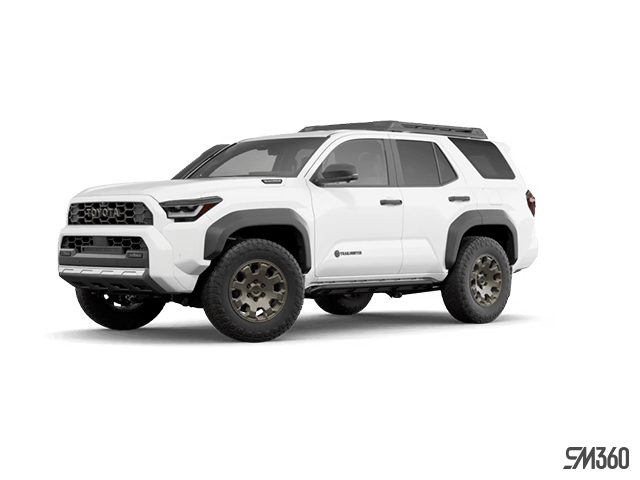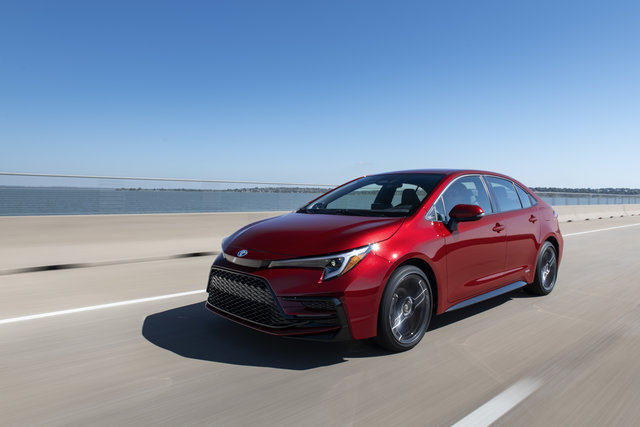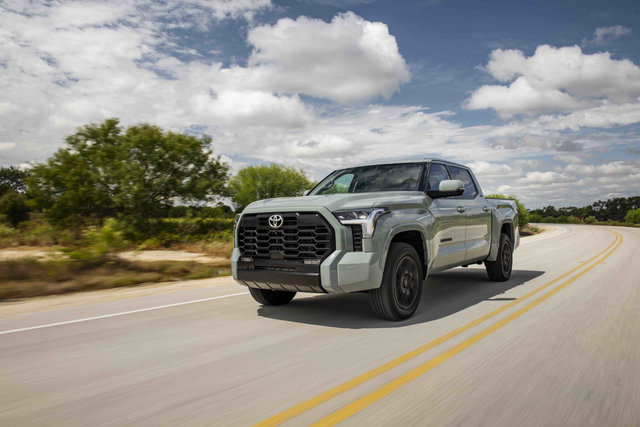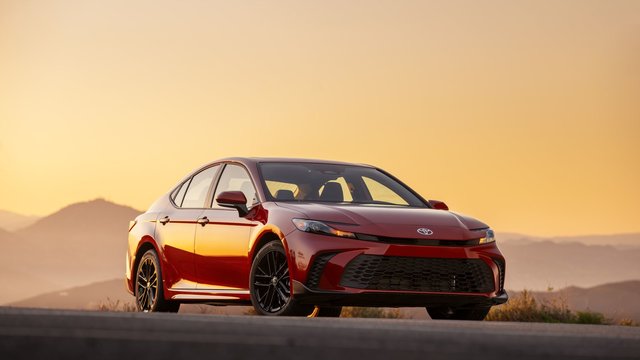Two vehicles stand out when serious off-road capability matters: the 2025 Toyota Sequoia TRD Pro and the 2025 4Runner i-FORCE MAX Trailhunter. Both deliver authentic trail performance, but they serve different purposes for Canadian families and adventure seekers. The choice depends on your specific requirements for passenger capacity, cargo needs, and off-road priorities.
The Sequoia TRD Pro focuses on combining family-hauling capability with serious off-road performance, while the 4Runner Trailhunter takes a dedicated overlanding approach with integrated adventure equipment. Understanding these differences helps determine which vehicle matches your outdoor lifestyle and practical needs.
Power and Performance Comparison
The powertrain differences reveal each vehicle's intended purpose. The 2025 Sequoia TRD Pro uses Toyota's i-FORCE MAX hybrid system, featuring a twin turbo V6 engine and high-torque electric motors working with a 10-speed automatic transmission. This setup generates 437 system horsepower and 583 lb-ft of torque, providing the muscle needed for heavy towing and full-size SUV duties.
The 2025 4Runner i-FORCE MAX Trailhunter employs the same i-FORCE MAX hybrid technology but produces 326 horsepower and 465 lb-ft of torque. While lower than the Sequoia's output, this power level suits the 4Runner's lighter weight and focused overlanding mission. Both vehicles feature standard four-wheel drive with systems designed for serious off-road conditions.
The Sequoia's higher output directly translates to superior towing capability. The TRD Pro can handle up to 4,091 kg (9,019 lbs) of trailer weight, while the 4Runner Trailhunter manages 2,631 kg (5,800 lbs). For families who regularly tow large trailers, boats, or recreational vehicles, this difference becomes a deciding factor.
Off-Road Capability and Equipment
Both vehicles come factory-equipped with serious off-road hardware, but their approaches differ significantly. The Sequoia TRD Pro features a TRD Pro off-road suspension system with 25 mm front lift, including 2.5-inch FOX internal bypass coil-overs and rear remote-reservoir shocks. This suspension setup prioritizes high-speed desert running and severe terrain handling while maintaining on-road comfort for daily family use. Ground clearance measures 221 mm for navigating obstacles and rough terrain.
The 4Runner Trailhunter takes an overlanding-focused approach with Old Man Emu shock absorbers, rock rails, comprehensive skid plate protection for the front, transfer case, and rear, plus an onboard air compressor for tire pressure adjustments. Toyota collaborated with specialized off-road component manufacturers to create this factory-integrated overlanding package.
Ground clearance measurements favor different terrain types. The Sequoia TRD Pro provides 221 mm of clearance, while the 4Runner design prioritizes maximizing clearance for rock crawling and challenging trails.
Interior Space and Passenger Capacity
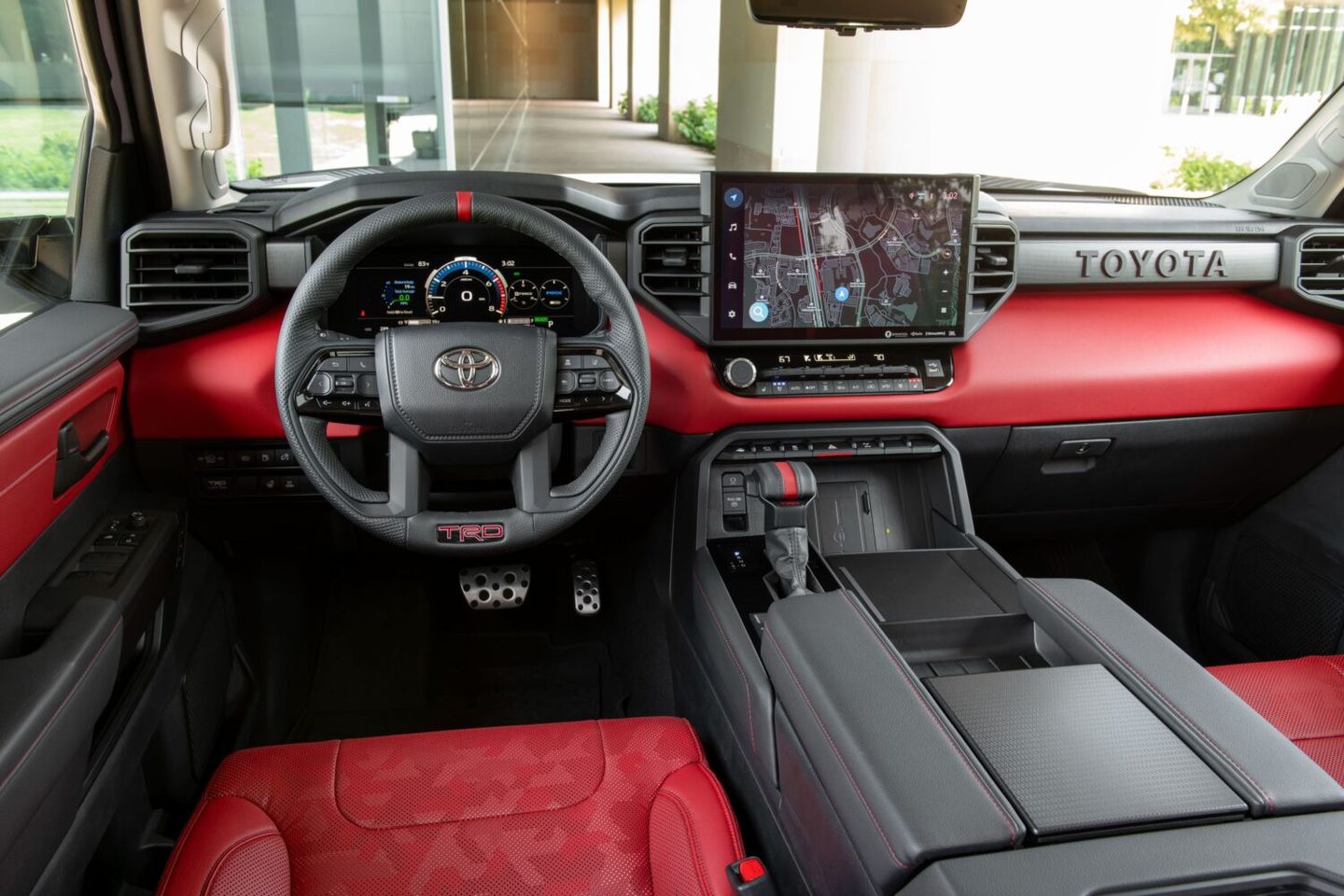
The interior differences reflect each vehicle's primary mission. The Sequoia TRD Pro provides seven-passenger seating with second-row captain's chairs, making it suitable for larger families or groups. Interior features include a 14-speaker JBL audio system, heated and ventilated front seats, driver's seat memory system, wireless charging dock, and Toyota Panoramic View Monitor.
The 4Runner Trailhunter seats five passengers, focusing on comfort and functionality for smaller groups or adventure-focused travelers. Interior amenities include heated, ventilated, and power adjustable front seats, semi-aniline upholstery, driver's seat memory system, heated steering wheel on a power adjustable column, and a 14-speaker JBL audio system with JBL FLEX Bluetooth-connected portable speaker.
Technology integration remains consistent between both vehicles, with 14-inch touchscreens running the Toyota Multimedia system, including Service Connect, Safety Connect, Remote Connect, and Drive Connect services. Both offer 12.3-inch digital gauge clusters and wireless charging capabilities for modern connectivity needs.
Cargo and Storage Solutions
Cargo capacity reveals another key difference between these off-road specialists. The Sequoia TRD Pro provides 632 litres of cargo space behind the second row, offering substantial storage for family gear and adventure equipment. The 4Runner Trailhunter offers 2,339 litres behind the front seats and 1,206 litres behind the second row.
The 4Runner Trailhunter includes integrated overlanding equipment that affects cargo calculations. The factory roof rack, onboard air compressor, and adventure-ready accessories reduce some interior storage but add exterior carrying capability for specialized gear.
Both vehicles include practical features for outdoor adventures. The 4Runner Trailhunter provides a 2,400-watt AC power outlet for camping equipment, while both models offer trailer brake controllers and backup guidance systems for towing situations.
Specification Comparison
|
Specification
|
Sequoia TRD Pro
|
4Runner Trailhunter
|
|
Engine
|
i-FORCE MAX Hybrid
|
i-FORCE MAX Hybrid
|
|
Power
|
437 hp / 583 lb-ft
|
326 hp / 465 lb-ft
|
|
Seating
|
7 passengers
|
5 passengers
|
|
Towing Capacity
|
4,091 kg (9,019 lbs)
|
2,631 kg (5,800 lbs)
|
|
Ground Clearance
|
221 mm
|
257 mm
|
|
Cargo (behind 2nd row)
|
632 litres
|
1,206 litres
|
Making Your Decision
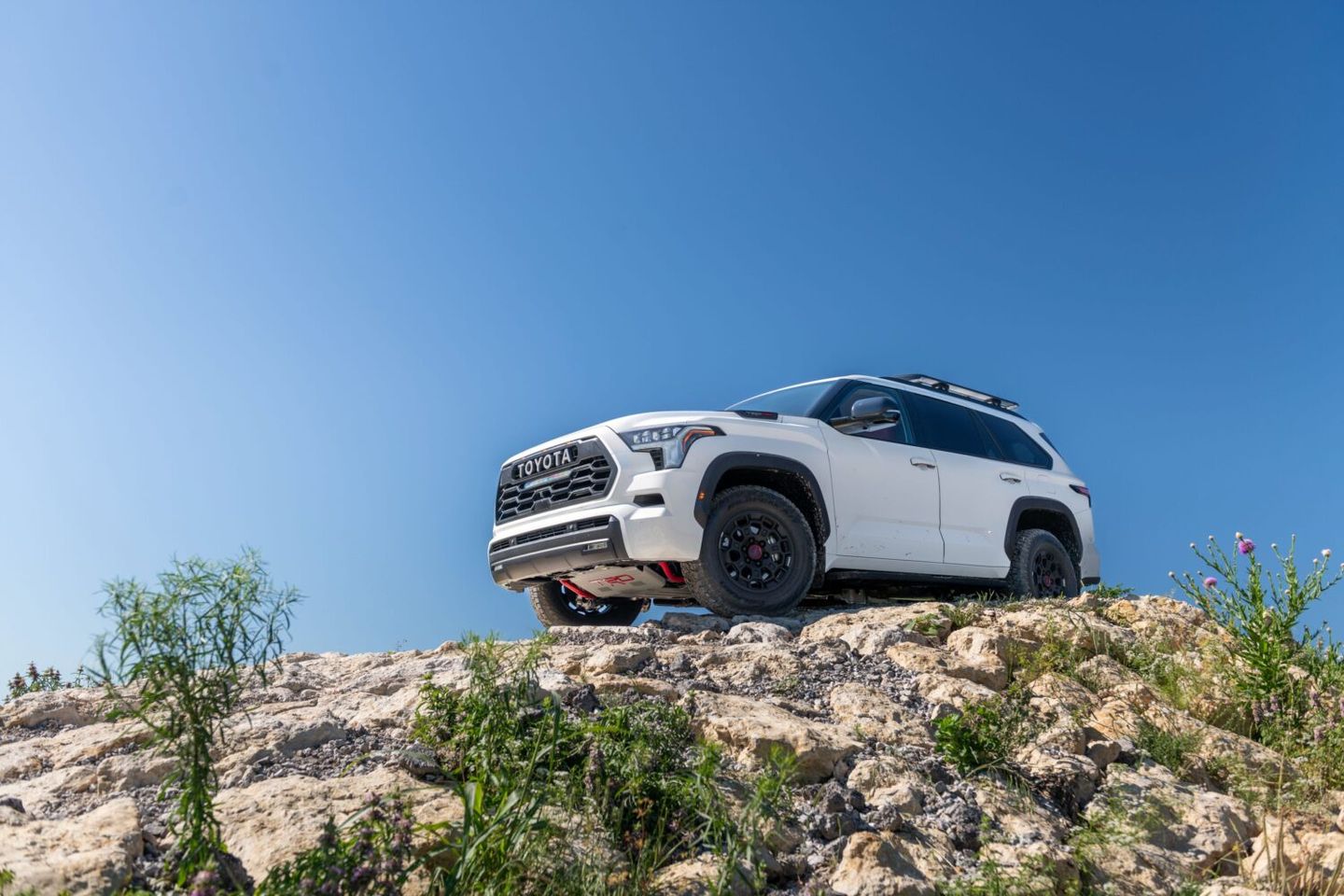
Choose the Sequoia TRD Pro if you need maximum passenger and cargo capacity, prefer higher towing capability, and want off-road performance without sacrificing family SUV practicality. This vehicle works well for families who regularly travel with seven passengers and substantial gear, or those who tow heavy recreational equipment.
Select the 4Runner Trailhunter if overlanding and specialized off-road adventures take priority, you prefer a more manageable size for technical terrain, and the integrated adventure equipment package matches your outdoor activities. The factory overlanding setup saves time and money compared to aftermarket modifications.
Both vehicles deliver authentic off-road capability with Toyota's proven reliability and hybrid efficiency. The choice depends on whether you prioritize maximum family capacity and towing capability or focused overlanding functionality with integrated adventure equipment.
Visit Tusket Toyota in Yarmouth to compare these off-road specialists in person and determine which model fits your adventure plans and family requirements.





